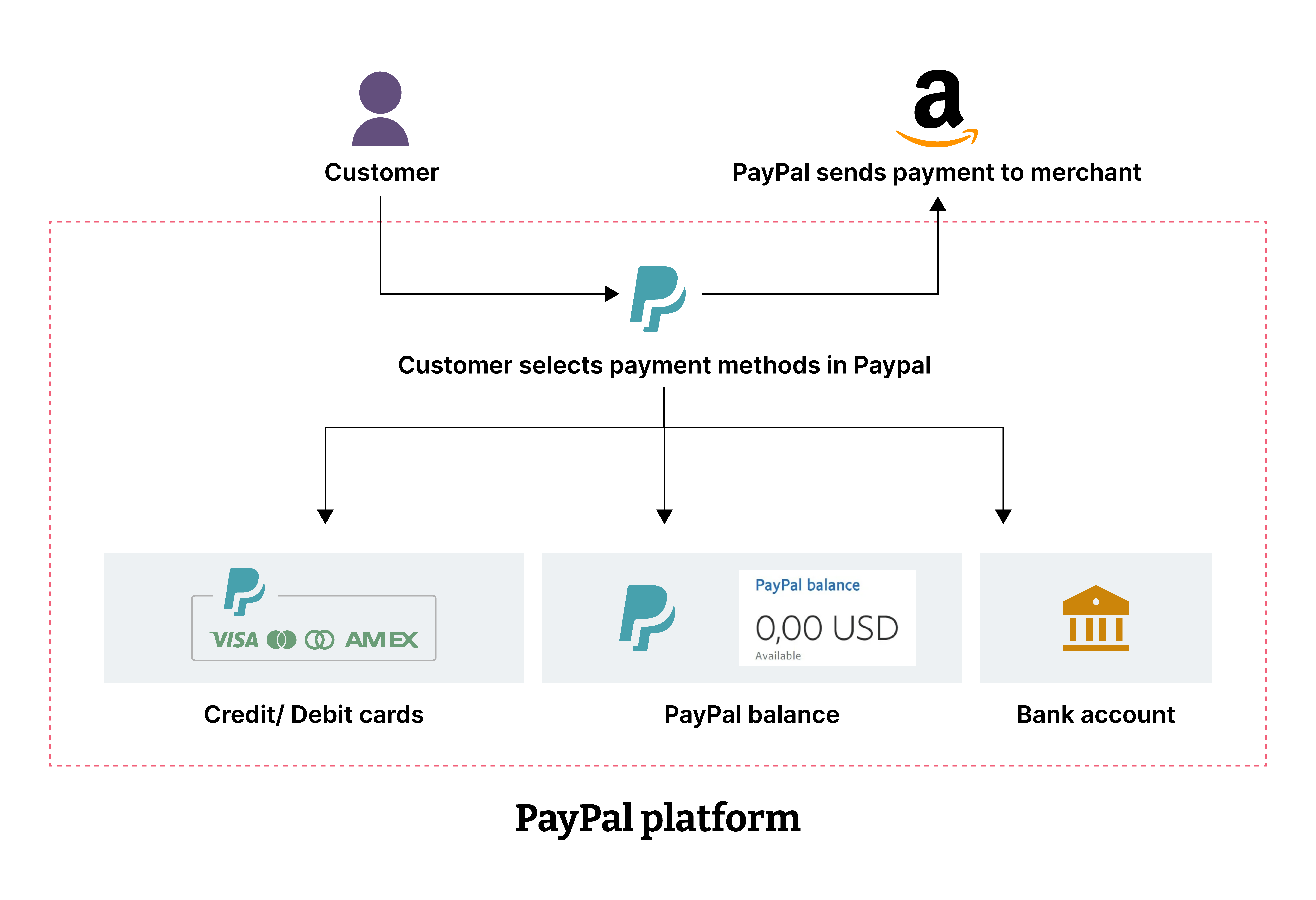There’s far more to a payment than just a simple transfer of funds. Every business and every customer has unique payment needs. Some favor speed or security, helping them transact faster and with greater confidence. Others demand a high standard of user experience and want to make transacting as simple as possible.
Over the years, the financial services industry has developed various payment methods to give businesses and their customers greater choice in how they transact. Today, driven by the rise of ecommerce and the emergence of fintechs, there are more options available than ever.
In this article, I'll walk through the biggest established, growing, and emerging payment methods in Australia today, examining the advantages and drawbacks of each — and helping you understand your options in this complex space.
Established payment methods
Bank transfers
Bank transfers have been a staple payment method for decades now. But several innovations have transformed them to help them meet the high demands of today’s businesses and customers. Perhaps the most notable among these innovations is the New Payment Platform (NPP).
New Payment Platform (NPP)
NPP helps banks in Australia provide complete payment remittance information and support fast payment, enabling businesses and government agencies to make near-real-time, data-rich payments, 24/7.
It’s a distributed switch of individual payment access gateways that exchanges messages between those gateways. While developing NPP, the Reserve Bank built a new infrastructure called the Fast Settlement Service (FSS), which provides 24/7 settlement of NPP transactions.
Overlay services are vital to the NPP structure. Businesses can subscribe to various overlay services on the platform, including person-to-person payments, near-real-time payments, and enhanced business requests and payments.
The overall processing flow of a customer-initiated payment is through a banking channel, like a mobile banking application. After ID setting and security checking, the payer institution (in this case named A) sends a message with all the relevant payment details to the payee’s institution (B) using its payment gateway. Once the money is cleared, the payment gateway of the payer institution (B) automatically initiates settlement by sending a settlement request to the FSS for validation, then following up by transferring value between the two institutions.
NPP could also be applied to meet real-time transfer requirements where a business needs to pay an employee, or make any other immediate transaction, on a particular day of the week.
The addressing service is another advantage NPP provides, enabling customers to associate their transaction account with a unique identifier called PayID through their financial institution. For instance, a PayID can be an email address, phone number, or ABN, helping reduce the risk of payment by mistake.
BPAY
BPAY is an Australian payment method that allows people to pay bills quickly and easily. For example, students can pay their tuition fees by using their bank application, selecting BPAY, and entering the BPAY number. Users can use their internet or phone banking platforms to make payments after receiving the bill from the institution. The student’s bank debits the amount and transacts to the institution's bank through BPAY. Institution’s bank then credits the account after the BPAY fees are deducted.
BPAY is a strong option for any company that asks customers to pay bills through an online banking system. It’s especially useful when customers need to make recurring bill payments. It gives customers validated information upfront, and helps them control their finances by giving them choice in when they pay their bills and which of their accounts they use for payment.
Cards
Debit and credit cards are the most commonly used payment methods in the Australian market. Many customers also use charge cards, which function very similarly to credit cards, but must be paid off within the month, and cannot be used for cash withdrawals.
A typical credit card authorization flow starts when the merchant requests authorization for a payment from a customer on Amazon.com.au through the payment gateway Square. This request is then passed to the front-end processor Fiserv, which enables merchants to easily connect to networks and other entities in the payment flow. Combining the payment gateway and payment processor helps securely authorize the transaction.
After the user proceeds with the payment, the merchant submits a batch of approved authorizations to acquire through its front-end processor. Then the acquirer reconciles the amount that the customer paid and transmits the batch to the issuer bank. Afterward, the issuer bank credits the account back to the merchant’s bank account after deducting charges. It then collects the amount from the customer.
Fees and surcharges also commonly factor into this process. For instance, the amount paid by the cardholder is $100 plus a 1% surcharge, equaling a total of $101. The merchant ultimately receives $99, after the issuer and acquirer deduct interchange fees of 0.5%, $0.05, and $1.45.
Despite the wide variety of payment methods available today, card payments still account for a large part of the market.
On the consumer side, debit cards remain an extremely popular option for the control they offer to consumers looking to manage their daily outgoings at a lower cost and without incurring interest.
For companies that serve businesses, enabling credit card options will add value. Many businesses still favor credit cards for their flexibility in allowing expense payments even when the company doesn’t have the required cash in place.
Eftpos
Eftpos gives consumers a quick, easy, and secure way to pay at the point of sale without handling cash or receipts.
Australians have three payment options at the point of sale: Cheque, Savings, and Credit. The payments of the first two options are processed through an Eftpos system, whereas Credit transactions are processed on the Visa or Mastercard network. Customers get instant transaction messages when they tap their cards on Eftpos machines and funds are deducted from their chosen account, making it a great way to keep track of spending in real time.
After the cardholder taps the card with an Eftpos merchant, the purchase information is passed to the machine, managed by Acquirer. The issuing bank is notified and holds the requested money from the customer's bank account. Then both of the banks summarize the daily transactions and send them to the Reserve Bank Information and Transfer System (RITS), Australia's high-value settlement system. RITS centralizes the data and settles the amount from the issuing bank to the acquiring bank, which passes it on to the merchant.
Business owners should consider this contactless payment method to help customers pay more efficiently when using debit cards, credit cards, mobile phones, and even new devices like Apple Watches. Also, with Eftpos, business owners can conveniently receive and process payments on mobile sites.
Growing payment methods
Digital and mobile wallets (called eWallets) accounted for around 43% of global payment transactions in 2020. By 2023, this share is expected to increase to 52%.
These eWallets represent the fastest-growing payment methods globally. In Australia, the three most frequently used eWallets are PayPal, Apple Pay, and Buy Now Pay Later (BNPL).
PayPal
PayPal allows customers to pay for items using a secure internet account. Customers simply add their bank account, credit card, or debit card details to their PayPal account, and whenever they pay using PayPal, they can choose which card or account it pays with.
PayPal acts as a payment gateway for online merchants to collect payments from consumers. Plus, for consumers, PayPal provides options to send money to other people or businesses.
Merchants can expect to pay fees between 2.2% to 4.4% plus $0.30 per transaction when using PayPal. However, despite those significant costs, it remains a popular choice because it’s a fast, simple, and safe service. It’s also a major platform of choice for many consumers, who expect merchants to support it.
Figure 1 demonstrates how PayPal sits on top of the bank and credit card options and allows consumers to use integrated payment selection, giving them the option to choose between paying by card or transferring directly from their bank account.


Figure 1. PayPal process flow
With 17 million merchants and nearly 250 million people using PayPal, it’s a hugely popular choice for both groups today. For merchants that sell or offer any service through a website, PayPal can add value and easily integrate with existing platforms.
Another advantage is that once merchants have connected PayPal and made it available to their customers, it helps them offer multiple payment methods, as it supports card payments and account transfers.
Apple Pay
Apple Pay is another popular payment method in Australia that supports most debit and credit cards. The eWallet sits on top of existing payment rails (schemes, Eftpos) and enables contactless payment through NFC-equipped devices. Apple Pay is widely used with point-of-sale (POS) terminals and has reached almost 99% penetration in Australia. Apple's cut is approximately 0.15% of each purchase, making it a competitive option from a cost perspective.
Apple Pay is on track to account for 10% of global card transactions by 2025. Its primary advantages over its competition are speed, in that it’s faster to use than tapping with a card, and its ease of integration with other parties, including Afterpay and store loyalty programs.
Apple Pay can help merchants offer their customers a simple, secure, and private way to pay, which can support them in-store, in-app, and on the web, offering a faster payment experience than traditional cards and other payment methods.
Buy Now Pay Later (BNPL)
BNPL — also known as POS lending or POS financing — is a relatively new disruptor in the payments space, offering customers the chance to take goods home immediately and pay for them later. It’s especially popular with younger customers who favor the convenience of making big payments in installments without using a credit card.
Afterpay is a well-known brand of BNPL in Australia. For example, when a customer buys an outfit from H&M in Myer they can use their Afterpay account to pay for it. Afterpay charges Myer between 2% to 5%, without any interest added on the customer side. The customer then pays installments to Afterpay through a scheme (VISA/Mastercard) or BSB/account number.
BNPL growth looks set to continue in the Australian market. BNPL solutions are most widely used in digital and online shopping channels, but demand is quickly rising for them to be made available through physical channels too.
Emerging fintech options
Fintech startups are constantly innovating to bring new financial services and payment options to market, undermining traditional institutions and models and setting new levels of customer expectation.
These services are customer-centric, flexible, fast, and secure — qualities that have seen fintechs like PayPal quickly grow from unknown disruptors to major global finance players.
But what does the future hold for fintechs? Well, many observers believe that tomorrow’s most successful fintechs will be those that approach financial services as a platform, rather than as closed services offered by a single provider. This platform approach would bring parties together, enabling them to exchange value freely, and acting as a conduit for future innovation and value creation.
The financial services industry in Australia has seen how transforming into a platform-based, digital banking ecosystem and introducing value co-creation and product customization can deliver significant value for customers and institutions alike.
For instance, accountants and bookkeepers can now use accounting software to manage assets, spending on payroll, liability, and more, with information directly integrated to the Australian Taxation Office or any other organization. For recurring spending, once the amount has been recorded in the software, it supports downloading ABA files for processing payments.
This ensures an extremely low cost of payment, but creates a lot of manual work and numerous opportunities for data entry error or data loss. But fintechs are now embedding efficient, secure solutions in accounting software that automate electronic payments without having to use ABA files.
It’s advances like these that will define the future of the fintech industry and the payments market in Australia and beyond.
Wherever points of friction occur in payment cycles, or between organizations and institutions in the payment cycle, if a fintech can solve that problem through its platform, it stands to grow significantly and differentiate itself in an increasingly crowded market.
The easier fintechs make it for all parties to integrate with one another, the faster they will enable payments to be processed. The smoother and more convenient they can make payment experiences for merchants and consumers, the greater the chance they will emerge on top of this shifting payment market.
Plus, if fintechs embrace a platform-based approach, they’ll gain visibility of valuable service data, enabling them to continuously improve their services and evolve alongside customer and merchant demands.


















